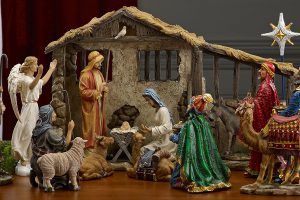
The whistling of lashes during the Buhe celebration, was a kind of hymn to the Ethiopian New Year and the dawning of the season of festivities. The festival of Buhe is unique to Ethiopia. There is no such thing as celebrating the rainy season in any culture around the world. It is also different from other festivities that take place around the same time.

Buhe comes and goes without much fanfare except that boys make a lot of noise with tier lashes that whistle from morning to sundown. You sometimes have the impression that the whistles from the lashes sound like successive rounds of firecrackers and the boys enjoy them even though they may not know what all the sound and the fury means.
Some take the whistling of the lashes as one way of celebrating the rainy season that symbolizes the months of hard work in the fields soon to be followed by the sowing of food grains, the tending, and harvests that inevitably follow.
Legend in some parts of Ethiopia maintains that the lashes are whistling to drive away the bad spirits that may be lurking around during the rainy season to cause harm. Or they are welcoming sounds of the season of happiness to come soon. The thunderbolts that may be hitting some parts of the countryside are taken for the punishment sent from the heavens to hit the devil wherever he might be hiding. Thus in traditional church lore, the whistling of lashes during the Buhe festival can be interpreted in various ways.
Legends and oral accounts aside, there are also religious motives behind the whistling of lashes during the Buhe celebration. What keeps Buhe apart from the other festivities that follow it is the fact that the celebrations are not about eating and drinking as most festivities in the country are. Buhe falls on the months of farming and hard work in the fields and there is usually no plenty of food to eat until the next harvest when people enjoy the meat and home-brewed beer, liquor and traditional dances and music that accompany them.
Buhe is observed with loaves of bread that are baked on the eve of the actual day and distributed mainly to children whenever they appear at the gates of houses to wish the residents good health, good fortune and a lot of happiness. This is in the countryside and the city version of Buhe is often about flattering the residents in badly-formed stanzas comparing them to the rich and famous in the world and wishing them long life, togetherness, good lives, fame and fortune. Loaves of bread as gifts is the last thing the boy singers expect to receive. They want money as a means of buying whatever they want to while loaves of bread do not give them such an opportunity.
In these times of scarcity in almost all consumable goods, many city residents prefer to make money gifts than bread for the simple reason that bread is harder to make than money these days. Whether in the countryside or in the towns the boy singers who collect the gifts bless the donors and leave wither with loaves of bread held in makeshift bags or money they put under the supervision a boy who is assigned to collect them before they shared it among themselves at the end of the day. As a rule the leader of the boy singing group is older than the rest of them and physically stronger enough to impose his will on the other boys.
Ethiopia has a well-established calendar of festivities if you wish to call it thus. By tradition in rural Ethiopia, the year is divided according to the months different activities take place. It can roughly be divided into three seasons consisting of four months each without taking into consideration the 13th month of Pagume that has its own history. From September to January, the main activities consist of harvesting and gathering the crops, preparing various festivities in the Ethiopian Orthodox tradition as well in the tradition of non-official religions or beliefs such as Ereecha, and others.
January is particularly known as the month weddings start to take place. This is because in normal times, the harvesting season produces enough resources to spend money for weddings. This tradition has its origins in the countryside and is also regulating the wedding season that continue until March or April. This is not codified in any law but followed by successive generations without questioning its existence simply because the calendar follows natural cycles in human lives.
Come September, the rainy season gives way to sunshine and the growing of the yellow Meskel flower (called “Adey Abeba” in Amharic), when fields, mountains and valleys are covered with what look like green and yellow carpets and you may sometimes get the impression that they look like the yellow sunflower fields in Van Gogh’s celebrated paintings about rural lives. Tourism is apparently at its peak during the season of festivities for these and other reasons. By the end of September and in the following months, nature in rural Ethiopia is awash with yellow and green colors, the Adey Abeba mixing with green grass.
Speaking of the wedding season, the month of April (or Ginbot in Amharic) was considered as unlucky month for tying the knot. This may be superstition or otherwise. Yet, of late the month has entered the calendar of wedding festivities in town in particular and people do not only mind about old beliefs but they do not as well ask why Ginbot was particularly singled out as “unlucky month” Thus, many weddings take place in Ginbot and there are no reported cases of bad lucks and if some marriages turns sour and breaks down as it often happens, it is the responsibility of the brides and grooms rather than bad luck.
The time after September is obviously the best time for tourists to visit Ethiopia because of the proliferation of religious festivities. Meskel or the founding of the cross is one, followed by Timket or the baptism of Christ , Ethiopian Christmas to name few of them officially celebrated. Tourists come in great numbers to Ethiopia not only to attend the celebrations, although they worth traveling for.
They come also to see nature in Ethiopia that metamorphoses and assumes a magically greenish and yellowish hue. Tourist arrivals reach a crescendo during this season although the traditional tourist sites are also making a good job throughout the year.
The tourism authorities in Addis Ababa need to take advantage of the bonanza of tourist arrivals in the next couple of weeks. They should not simply let tourists watch the various celebrations and then leave the capital for some other locations. They need to provide or create additional tourist attractions within the city like visits to important landmarks within the capital.
For instance, the largest market in the capital (until recently in Africa) known as Mercato, could be one destination worth seeing at this particular time, when the old traditional market as it was built by the Italians more than eight decades ago, is now giving way to modern buildings and posh supermarkets. The last vestiges of the old market is worth visiting by foreign tourists before it disappears into the past.
There are also historical sites within the capital that could be interesting to the curious tourists who would like to know how the Ethiopian capital came into existence and who was behind its founding. Instead of watching old sites being demolished one by one in the name of modernization, the tourism officials should work harder to preserve some of the remnants of the first mud houses built in the time of Emperor Menilik, the first trains, the first hotel built by Empress Taitu the first school, the first church or mosque in the capital.
There is an important and potentially lucrative tourism attraction some 47 km from Addis Ababa in the town of Bishoftu or Debre Zeit which is also known as the town of the seven lakes. Bihoftu town is a tourist destination in itself, for its ideal climate, its lakes and luxurious hotels as well as the potentials for mountain trekking in the far corner of Mount Yerer which is visible in the distance. Bishoftu is also home to various bird species that could provide a rare opportunity for bird watchers to enjoy their visit.
The annual Ereecha festival that takes place at one of the lakesides in the town is a big event that attracts as many as more than one million pilgrims to the site. Ereecha is a festival of thanksgiving to waka or god who is the provider of water from rainfall and the rituals are a kind of offerings to the provider of all the bounties. The event takes place in September of every year and attracts a number of foreign tourists. The town’s tourism bureau, in conjunction with its counterpart in Addis could work hard ahead of the festival and popularize it around the world.
All these sites could well serve as points of attraction if the visits are well-organized or well-advertised on line and managed in a way that makes tourists stay and visit them for one reason or another. There are so many untapped resources for tourism attractions even within the capital. What we lack is the required imagination, organization and commitment to turn potentials into tangible products. As Addis Ababa is turning into a big metropolis with amazing hotels and other amenities, it is bound to attract more tourists than in the past.
Those in charge of its tourist attractions should abandon their old, passive way of doing things and combine technology with tradition and inventiveness to make the African diplomatic capital one of the must see places in the world.
By the way, the recent announcement about the Great Ethiopian Run which takes place in Addis every year in November being chosen as the best street event attracting more than 40000 participants, is an additional asset for tourism development in the capital. The city’s tourism development office is expected to maintain this new status Addis Ababa has earned and build on it by spreading the news and by organizing related events.
The new Ethiopian year has already dawned and tourist are bound to come soon to this fabulous country and enjoy the good season. This is also the time for a big promotional event for tourism. The relevant authorities are expected to work with more focus and more zeal to welcome tourists and make the most out of the opportunities offered by this particular season.
The Ethiopian Herald Sunday Edition 29 September 2019
BY MULUGETA GUDETA





